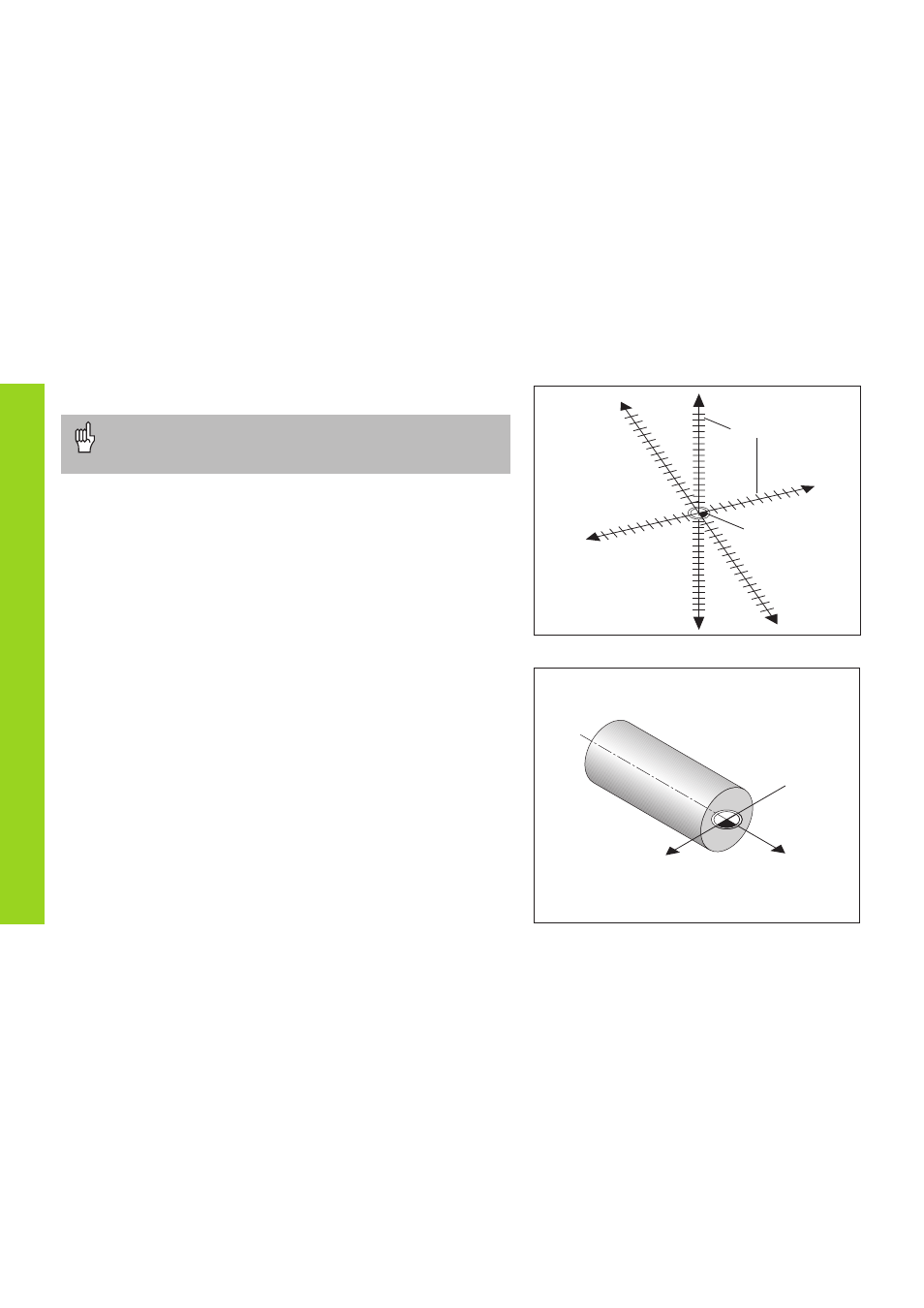Fundamentals – HEIDENHAIN ND 730 v.1 User Manual
Page 4

Fundamentals
4
+Y
+X
+Z
–Z
–Y
–X
Z
X
Fundamentals
You can skip this chapter if you are already familiar with
coordinate systems, incremental and absolute dimensions,
nominal positions, actual positions and distance-to-go!
1)
Named in honor of the French mathematician and philosopher
René Descartes (1596 to 1650)
Datum or
origin
Graduation
Coordinate system
To describe the geometry of a workpiece, a rectangular or
Cartesian
1)
coordinate system is used. The Cartesian coordinate system consists
of three mutually perpendicular axes X, Y and Z. The point of
intersection of these axes is called the datum or origin of the
coordinate system.
Think of the axes as scales with divisions (usually in millimeters) that
allow us to fix points in space referenced to the datum.
To determine positions on a workpiece, the coordinate system is
“laid” onto the workpiece.
With lathe work (i.e. rotationally symmetrical workpieces), the Z axis
moves along the axis of rotation, and the X axis moves in the direction
of the radius or diameter. The Y axis can be disregarded since it would
always have the same values as the X axis.
